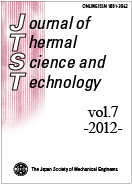Volume 7, Issue 1
Displaying 1-27 of 27 articles from this issue
- |<
- <
- 1
- >
- >|
Papers
-
2012Volume 7Issue 1 Pages 1-15
Published: 2012
Released on J-STAGE: January 06, 2012
Download PDF (712K) -
2012Volume 7Issue 1 Pages 16-30
Published: 2012
Released on J-STAGE: January 18, 2012
Download PDF (710K) -
2012Volume 7Issue 1 Pages 31-44
Published: 2012
Released on J-STAGE: January 18, 2012
Download PDF (624K) -
2012Volume 7Issue 1 Pages 45-57
Published: 2012
Released on J-STAGE: January 25, 2012
Download PDF (862K) -
2012Volume 7Issue 1 Pages 58-74
Published: 2012
Released on J-STAGE: February 02, 2012
Download PDF (1654K) -
2012Volume 7Issue 1 Pages 75-89
Published: 2012
Released on J-STAGE: February 02, 2012
Download PDF (900K) -
2012Volume 7Issue 1 Pages 90-103
Published: 2012
Released on J-STAGE: February 17, 2012
Download PDF (576K) -
2012Volume 7Issue 1 Pages 104-119
Published: 2012
Released on J-STAGE: February 29, 2012
Download PDF (598K) -
2012Volume 7Issue 1 Pages 120-134
Published: 2012
Released on J-STAGE: March 19, 2012
Download PDF (1233K) -
2012Volume 7Issue 1 Pages 135-150
Published: 2012
Released on J-STAGE: April 06, 2012
Download PDF (837K) -
2012Volume 7Issue 1 Pages 151-165
Published: 2012
Released on J-STAGE: April 06, 2012
Download PDF (712K) -
2012Volume 7Issue 1 Pages 166-179
Published: 2012
Released on J-STAGE: April 20, 2012
Download PDF (1339K) -
2012Volume 7Issue 1 Pages 180-189
Published: 2012
Released on J-STAGE: May 18, 2012
Download PDF (384K) -
2012Volume 7Issue 1 Pages 190-198
Published: 2012
Released on J-STAGE: June 01, 2012
Download PDF (837K) -
2012Volume 7Issue 1 Pages 199-210
Published: 2012
Released on J-STAGE: June 18, 2012
Download PDF (791K) -
2012Volume 7Issue 1 Pages 211-226
Published: 2012
Released on J-STAGE: July 09, 2012
Download PDF (891K)
Short Paper
-
2012Volume 7Issue 1 Pages 227-235
Published: 2012
Released on J-STAGE: July 09, 2012
Download PDF (1585K)
Special Selection from ASCHT
-
2012Volume 7Issue 1 Pages 236
Published: 2012
Released on J-STAGE: July 31, 2012
Download PDF (122K)
Papers (Special Issue)
-
2012Volume 7Issue 1 Pages 237-248
Published: 2012
Released on J-STAGE: July 31, 2012
Download PDF (1476K) -
2012Volume 7Issue 1 Pages 249-261
Published: 2012
Released on J-STAGE: July 31, 2012
Download PDF (3601K) -
2012Volume 7Issue 1 Pages 262-271
Published: 2012
Released on J-STAGE: July 31, 2012
Download PDF (862K) -
2012Volume 7Issue 1 Pages 272-287
Published: 2012
Released on J-STAGE: July 31, 2012
Download PDF (1144K) -
2012Volume 7Issue 1 Pages 288-300
Published: 2012
Released on J-STAGE: July 31, 2012
Download PDF (983K) -
Spectral Molecular Dynamic Analysis of Coherent Phonon Propagation in Nanoribbon after Pulse Heating2012Volume 7Issue 1 Pages 301-312
Published: 2012
Released on J-STAGE: July 31, 2012
Download PDF (512K) -
2012Volume 7Issue 1 Pages 313-321
Published: 2012
Released on J-STAGE: July 31, 2012
Download PDF (1461K) -
2012Volume 7Issue 1 Pages 322-333
Published: 2012
Released on J-STAGE: July 31, 2012
Download PDF (418K) -
2012Volume 7Issue 1 Pages 334-349
Published: 2012
Released on J-STAGE: July 31, 2012
Download PDF (4107K)
- |<
- <
- 1
- >
- >|
